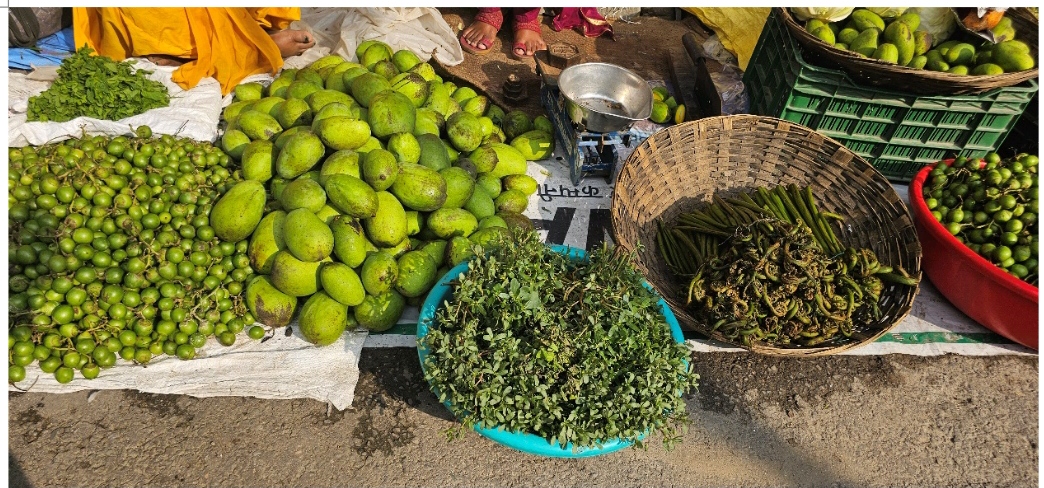International Day of Awareness of Food Loss and Waste: The Neglect and Wastage of Wild Food Plants.
Shimla:
Every year on September 29th, the International Day of Awareness of Food Loss and Waste (IDAFLW) is observed to highlight global issues related to food waste and the necessary steps to mitigate them. The theme for 2024, “Climate Finance for Food Loss and Waste Reduction,” emphasizes the need for sustainable solutions to address the interlinked challenges of climate change and food security. In this context, the neglect and subsequent wastage of wild food plants, often overlooked, becomes even more significant. This problem is especially alarming when considering the rising global scarcity of affordable and nutritious food in many parts of the world, compounded by inflation and insecure supply chains.
The Global Food Problem and the Challenge of Food Waste.
Despite the global food system’s ability to produce enough calories to feed everyone, millions of people continue to suffer from hunger or lack access to nutritious food. This food insecurity, combined with the enormous amount of food waste, creates a dire situation, exacerbating hunger and malnutrition globally. According to the UNICEF Child Nutrition Report 2024, 40% of children in India are undernourished or suffer from hunger. This is particularly troubling in a country like India, where various wild food plants grow abundantly but are underutilized due to ignorance and lack of awareness.
Food waste is often associated with agricultural produce, but the wastage of wild food plants remains an under-discussed aspect of this issue. The significance of this problem increases as food insecurity continues to rise in different parts of the world.
Neglect of Wild Food Plants: An Overlooked Issue.
The neglect of wild food plants is not a new phenomenon. For centuries, these plants were an integral part of traditional diets and medicinal systems. Tribal and rural communities have long depended on wild plants, drawing from their extensive knowledge of the plants’ identification, uses, and conservation. However, in recent decades, urbanization and modernization have diminished the importance of these plants.
Most people are unaware of how to identify or utilize wild plants. As a result, they are often treated as weeds, ignored, or destroyed. The growing disconnect between modern lifestyles and traditional knowledge has led to the slow extinction of many plant species that were once vital to local diets and medicine. The tradition of using wild food plants, which was passed down from generation to generation, is being eroded by modern, fast-paced lifestyles and the shift toward convenience foods.
The Role of Wild Food Plants in Reducing Food Waste.
Wild food plants have immense potential to play a crucial role in addressing food security and reducing food waste. These plants are rich in nutrients and medicinal properties, and in many cases, they contain higher levels of proteins, vitamins, and minerals than cultivated crops. Their inclusion in our diets can not only enhance nutrition but also add diversity to our food sources.
In times of food scarcity, such as during famines, droughts, or other natural disasters, wild food plants provide a reliable and sustainable source of nourishment. They are more resilient to adverse environmental conditions than cultivated crops. Furthermore, wild plants, being organic by nature, contribute to environmental sustainability.
Wild Plants and Climate Change: One of the key characteristics of wild plants is their resilience to climate change. They can survive in harsh environmental conditions, whereas cultivated crops are more vulnerable to climatic changes and natural disasters. Thus, to reduce food loss and waste, we need to encourage the sustainable harvesting and consumption of wild food plants.
Local Context: Wastage of Wild Food Plants in Himachal Pradesh.
In regions like Himachal Pradesh, where a rich diversity of rare and medicinal plant species is found, the neglect of these plants is highly unfortunate. Wild edible fruits, leaves, and herbs from natural habitats, which have high market value and global demand, are often underutilized or wasted. For instance, wild plants like bans shoot buds (Bamboo shoots) and Opuntia (Prickly pear cactus), traditionally used in medicinal treatments, are either overlooked or wasted due to a lack of commercial awareness.
There are several reasons why wild food plants are often wasted:
Lack of awareness about their identification and importance.
The labor-intensive process of harvesting and processing these plants.
The rapid shift toward urban lifestyles.
Easier access to commercially available crops.
Consequently, wild food plants, which could significantly contribute to our food systems, remain underutilized and wasted.
The Need for Food Processing and Value Addition.
To reduce food waste, it is crucial to promote the sustainable harvesting and value addition of wild food plants. These plants can be transformed into valuable products through processing, which not only helps prevent wastage but also creates opportunities for local communities to earn livelihoods.
The Indian government has taken several initiatives to boost the food processing industry. The National Food Processing Policy 2017 aims to reduce food waste, ensure better prices for local communities, and provide consumers with affordable and quality products. Encouraging value-added products from wild plants will not only reduce wastage but also create new sources of income for rural and tribal communities.
Moreover, Self-Help Groups (SHGs) and local entrepreneurs can be empowered through training and awareness programs to leverage the potential of wild food plants. Traditional recipes made using these plants can be modernized and marketed as high-value products. This will offer a cheap and sustainable source of nutrition for people and prevent the wastage of these valuable resources.
Success Stories: Bamboo Shoots and Opuntia (Nagphani)
Wild plants like Bans shoot buds (Bamboo shoots) have been traditionally known to have medicinal properties, particularly in controlling thyroid problems and most of Fig varieties traditionally used to cure piles. However, these are largely neglected and left to rot in forests, due to a lack of awareness about their potential health benefits and commercial use. A recent conversation with a local seller of Mandi named Meena Ji revealed the untapped benefits of bamboo shoots, particularly in managing thyroid conditions.
Similarly, Opuntia (Nagphani) is another wild plant with immense health benefits. Its tender pads are edible and rich in vitamins and minerals, yet they remain underutilized in most parts of India. By promoting awareness and encouraging their sale in local markets, these plants can be integrated into mainstream diets, reducing waste and enhancing nutritional security.
Our Role on the International Day of Awareness of Food Loss and Waste.
On the occasion of the International Day of Awareness of Food Loss and Waste, we must pledge to promote the sustainable use and conservation of wild food plants. These plants are not only nutritionally rich but also environmentally sustainable. By utilizing them correctly and consistently, we can significantly reduce food waste and contribute to solving the global hunger and malnutrition crisis.
Ultimately, the responsible use of wild food plants can help us build a healthier, more sustainable, and nutritionally secure global food system. It’s time to spread awareness, foster collaboration, and take concrete steps toward preserving our natural heritage while combating food loss and waste. By doing so, we not only protect our environment but also enhance the health and well-being of future generations.
(Writer is Dr. Tara Devi Sen, Head of Department of Botany in Vallabh Government College Mandi HP.)



